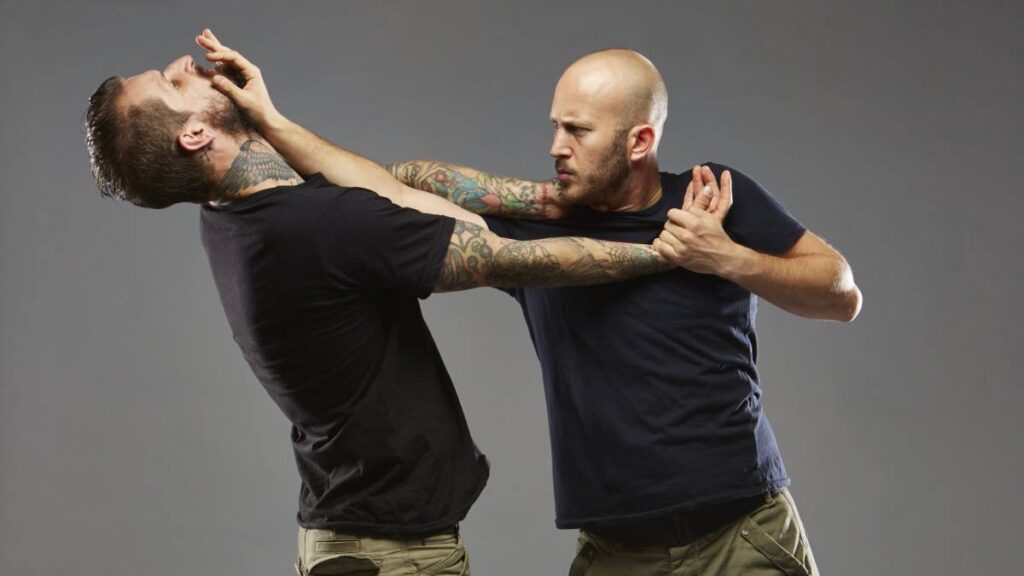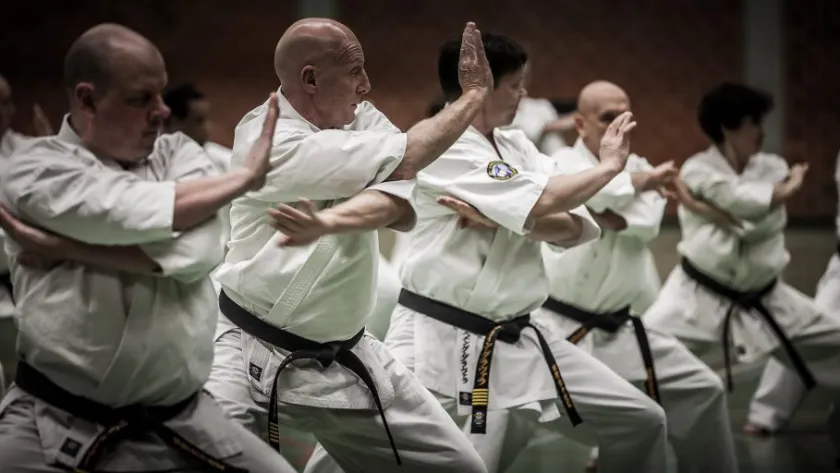Krav Maga: Self-Defense and Survival Techniques

Krav Maga is a modern self-defense system that originated in Israel, designed to teach individuals how to defend themselves in real-life situations quickly and effectively. Unlike traditional martial arts, Krav Maga focuses on practical self-defense and survival techniques, rather than competitive sportsmanship or ritualized combat. Its methods emphasize natural reactions, swift counterattacks, and neutralizing threats in the shortest amount of time possible. This article will explore the origins of Krav Maga, its core principles, and how it can be an effective tool for self-defense and survival in a range of dangerous scenarios.
1. Origins of Krav Maga
Krav Maga was developed in the 1930s by Imi Lichtenfeld, a Hungarian-Israeli martial artist and boxer. In response to rising violence against Jewish communities in Europe, Lichtenfeld created a practical self-defense system that could be easily taught to civilians with little or no combat experience. After moving to Israel, he refined his system to train military personnel in the Israeli Defense Forces (IDF). Krav Maga soon became the official hand-to-hand combat system of the IDF, renowned for its simplicity and effectiveness in close-quarters combat.
2. Core Principles of Krav Maga
Krav Maga is built on a few fundamental principles that set it apart from other martial arts. These principles aim to make self-defense instinctive, direct, and highly effective under stress:
a. Simplicity and Efficiency
Krav Maga focuses on simple, easy-to-learn movements that can be applied in high-stress situations. It prioritizes natural reactions and gross motor skills, which are more reliable than complex techniques in the heat of combat. The goal is to neutralize threats in the quickest and most efficient way possible.
b. Use of the Body’s Natural Reactions
One of the key principles of Krav Maga is to harness the body’s natural reflexes. For example, if someone tries to grab or choke you, your instinctive reaction might be to pull away or protect yourself with your hands. Krav Maga techniques are designed to enhance and weaponize these natural responses, turning them into effective counterattacks.
c. Targeting Vulnerable Areas
Krav Maga teaches practitioners to strike at the most vulnerable areas of an attacker, such as the eyes, throat, groin, and knees. By targeting these areas, even a physically smaller or weaker individual can incapacitate a larger and stronger attacker.
d. Neutralizing the Threat Quickly
The primary objective in Krav Maga is to end a confrontation as quickly as possible. This could mean disabling an attacker through strikes, escaping a dangerous situation, or controlling the attacker until help arrives. Krav Maga does not emphasize prolonged fights or showmanship but focuses on getting out of a violent encounter safely.
e. Defending and Attacking Simultaneously
In Krav Maga, defense and attack are often executed simultaneously. For example, while blocking a punch, a practitioner might deliver a counterstrike to the attacker’s face or body in the same motion. This ensures that the defender is never purely defensive but always looking to disable or deter the threat.
3. Key Techniques in Krav Maga
Krav Maga training includes a variety of techniques for dealing with different threats, from unarmed attackers to assailants armed with weapons like knives or guns. Here are some of the most important techniques taught in Krav Maga:
a. Striking
Krav Maga teaches a variety of striking techniques that can be used to quickly incapacitate an attacker. These include punches, elbows, knee strikes, and kicks, with a focus on targeting vulnerable areas. Practitioners are trained to strike with speed and precision, using every available body part as a weapon.
b. Defending Against Grabs and Holds
Krav Maga offers numerous techniques for escaping from grabs, holds, and chokes. These moves emphasize breaking free from the attacker’s grip and immediately counterattacking to create space or escape. For example, a common Krav Maga technique teaches how to break a chokehold by striking at the attacker’s weak points while simultaneously releasing the grip.
c. Weapon Defense
One of the unique aspects of Krav Maga is its emphasis on defending against weapons. Practitioners learn how to disarm attackers wielding knives, guns, and sticks, often using the attacker’s momentum against them. Krav Maga weapon defense is highly practical and designed for real-life situations where hesitation could be deadly.
d. Multiple Attackers
Krav Maga also prepares practitioners to deal with multiple attackers, teaching techniques to avoid being surrounded and how to fight off more than one opponent at once. This might include using one attacker as a shield or positioning oneself strategically to deal with threats one at a time.
4. Mental Preparedness and Situational Awareness
Beyond the physical techniques, Krav Maga places a strong emphasis on mental preparedness. Practitioners are trained to stay aware of their surroundings, anticipate potential threats, and maintain a proactive mindset in self-defense scenarios. This “combat mindset” is essential for surviving real-world encounters where attackers may not follow the rules of a traditional fight.
5. Why Krav Maga for Self-Defense?
Krav Maga has gained popularity worldwide not only in military and law enforcement circles but also among civilians looking for an effective self-defense system. Its no-nonsense approach makes it ideal for individuals of all ages and fitness levels. The system can be particularly useful for those who need to defend themselves in urban environments, where sudden violence or threats can occur without warning.
6. Conclusion
Krav Maga is a highly effective self-defense and survival system that prioritizes simplicity, efficiency, and real-world applicability. Its techniques are designed to be learned quickly, making it an accessible form of self-defense for people of all backgrounds. By training in Krav Maga, individuals can build the confidence, physical conditioning, and mental toughness needed to protect themselves and others in dangerous situations.
Physical Conditioning for Martial Artists
Martial arts training is not only about mastering techniques and forms; it also requires a high level of physical fitness. Physical conditioning enhances a martial artist’s speed, strength, endurance, flexibility, and overall ability to perform at peak levels. In this section, we’ll explore the key elements of physical conditioning for martial artists and how it improves performance in different martial disciplines.
1. Cardiovascular Endurance
Cardiovascular endurance is crucial for martial artists, as it allows them to maintain energy and perform at high intensity throughout their training and during competitions. Martial arts can be physically taxing, requiring bursts of energy for striking, grappling, and sparring. Incorporating cardiovascular exercises like running, swimming, and interval training into a martial artist’s routine helps improve heart health and lung capacity, allowing them to sustain their energy levels during prolonged bouts.
a. High-Intensity Interval Training (HIIT)
HIIT is an effective method for martial artists to build endurance. By alternating between intense bursts of exercise and short recovery periods, HIIT mimics the stop-and-go nature of martial arts competition. It also improves the body’s ability to recover quickly, which is essential in multi-round combat scenarios.
2. Strength Training
Strength is essential for both offensive and defensive martial arts techniques. Building muscle not only enhances the power behind strikes but also helps protect against injury during throws, falls, and grappling.
a. Compound Movements
Martial artists benefit from compound movements like squats, deadlifts, and bench presses, which work multiple muscle groups simultaneously. These exercises develop overall body strength and stability, improving performance in explosive movements such as kicks, punches, and takedowns.
b. Bodyweight Exercises
Bodyweight exercises such as push-ups, pull-ups, and lunges are also fundamental in martial arts conditioning. These movements improve core strength, balance, and functional strength, which are vital for executing techniques fluidly and efficiently.
3. Flexibility and Mobility
Flexibility is essential for martial artists, particularly in disciplines that involve high kicks, acrobatic movements, or ground fighting. Flexibility training, such as dynamic stretching, yoga, or Pilates, helps increase the range of motion, reduce stiffness, and lower the risk of injury.
a. Dynamic vs. Static Stretching
Dynamic stretching, which involves controlled movements that take the muscles through their full range of motion, is particularly beneficial for martial artists before training. Static stretching, on the other hand, is best done after training to improve muscle flexibility and recovery.
4. Balance and Coordination
Good balance and coordination are essential in martial arts for maintaining proper stance, avoiding attacks, and executing techniques with precision. Balance exercises, such as standing on one leg or using balance boards, help improve body control and stability.
5. Core Strength
Core strength is the foundation of nearly every martial arts technique. A strong core improves posture, enhances balance, and generates power in strikes and grappling. Exercises like planks, Russian twists, and leg raises build core stability and endurance, which are key for maintaining technique during long training sessions.
6. Agility and Speed
In martial arts, speed can make the difference between landing a strike or avoiding an opponent’s attack. Agility drills, including ladder drills, cone drills, and quick footwork exercises, help martial artists develop the ability to move swiftly and change direction with ease.
Physical conditioning is an integral part of martial arts training, complementing technical skills with the strength, speed, and endurance needed for peak performance. By incorporating cardiovascular training, strength exercises, flexibility routines, and agility drills, martial artists can enhance their overall capabilities, reduce the risk of injury, and ensure longevity in their practice.







Responses